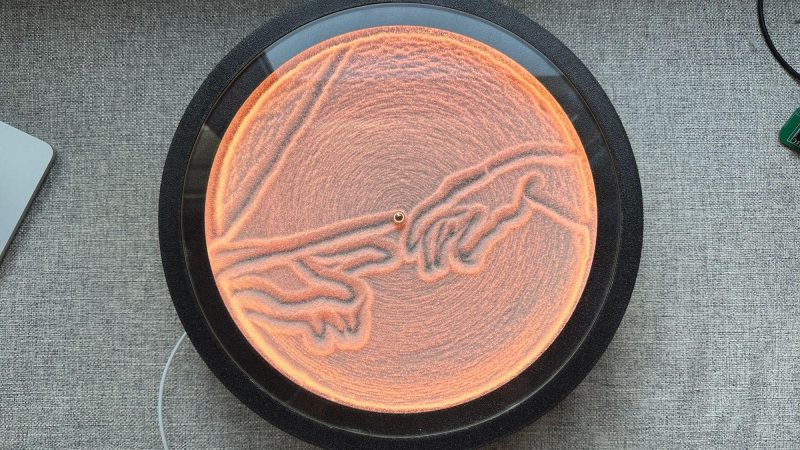Humans have always drawn lines in the sand, whether it’s to communicate a plan of attack or to indicate metaphorically a very real boundary. It’s also something we do just for the aesthetic pleasure, and this plotter from [aidenvigue] is great at performing in just that role.
The plotter traces patterns in the circular sand tray by dragging a small marble with a magnet. This is achieved with a pair of NEMA 17 stepper motors, set up in a polar coordinate fashion. One stepper motor controls the angle, while another motor controls the marble’s distance from the center point of the circle. It’s a simple way to build a circular plotter, and works far better than a Cartesian setup would for this geometry. The build uses an ESP32 as the brains of the operation. It hosts a web interface that allows various patterns to be selected and run on the device. It also runs a set of addressable SK6812 LEDs that light the sand rather nicely.
We’ve seen some great sand plotters before, and have always been particular fans of the larger variety. Video after the break.

















Really nice idea and looking great
I wonder if there is an equivalent to CoreXY or HBot mechanisms for polar plotters? Ie motors off to one side, controlling both angle and distance via a single continuous belt?
I could imagine problems doing continuous rotation, and having to rotate 359 degrees to move 1.
I think the design shown kind of qualifies, though not as you explain. In order to do a pure theta rotation, both motors must rotate. To do a radial movement, the center motor must rotate faster or slower than it is already rotating for the theta movement. Although if there is no theta movement, the center motor is doing direct radial movement.
As far as something like you describe, it’s possible, except for what I’ve come up with, it requires the radial movement to be fixed while theta movement requires a rotating bed. You just place two belt loops side by side, with a pulley in between them. If the belts move in opposite directions, the pulley rotates. If the belts move in the same direction, the pulley translates (along a slide that’s parallel to the belts). The pulley needs an additional belt with a take-up idler to send its rotation to the bed.